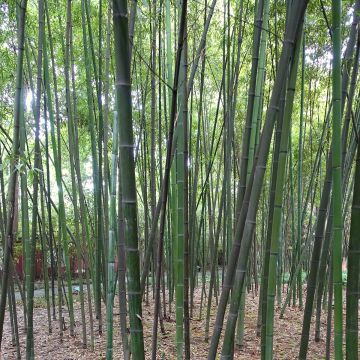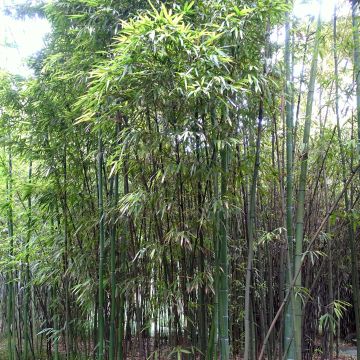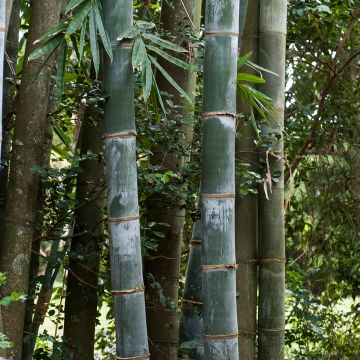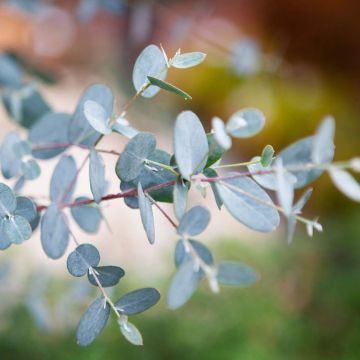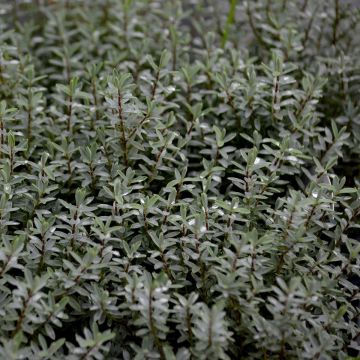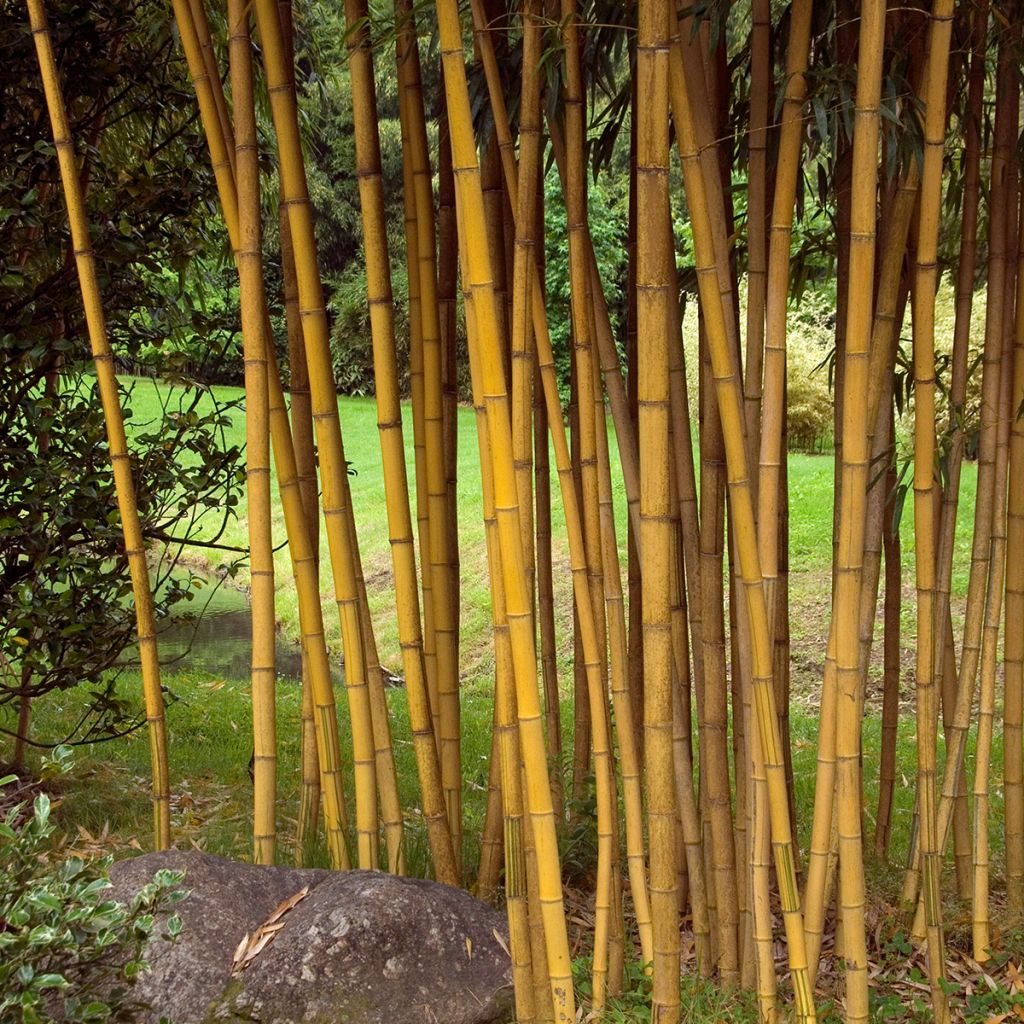

Phyllostachys vivax Aureocaulis - Golden Chinese Timber Bamboo
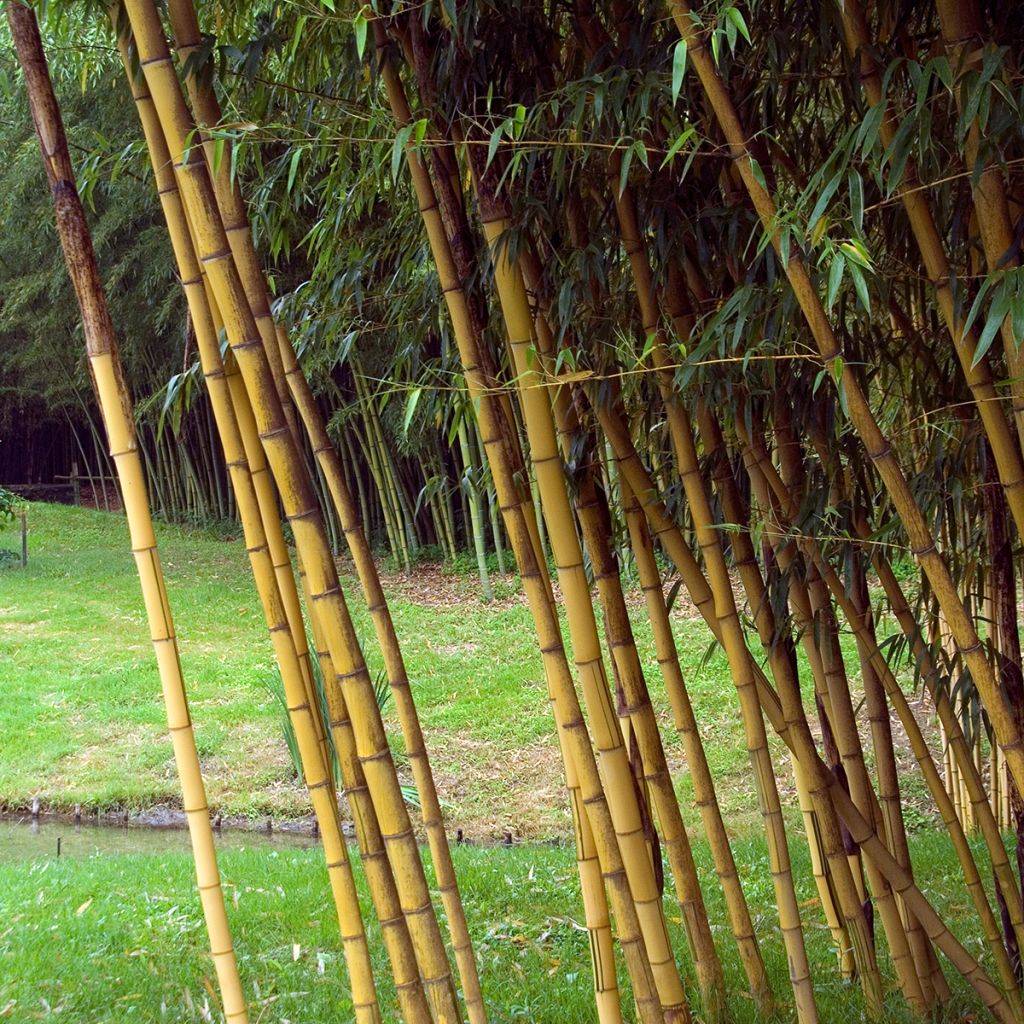

Phyllostachys vivax Aureocaulis - Golden Chinese Timber Bamboo
Phyllostachys vivax Aureocaulis - Golden Chinese Timber Bamboo
Phyllostachys vivax Aureocaulis
Golden Chinese Timber Bamboo
Careful and fast dispatch. Young plant in full spring recovery. However, misleading advertisement: I purchased this specific research area ref 84917 in 150/+cm and I receive this reference in 80/100. A bit disappointing.
Fabrice, 28/04/2023
This item cannot be shipped to the selected country
Oversize package delivery charge from €6.90
More information
Schedule delivery date,
and select date in basket
This plant carries a 24 months recovery warranty
More information
We guarantee the quality of our plants for a full growing cycle, and will replace at our expense any plant that fails to recover under normal climatic and planting conditions.
Oversize package: home delivery by special carrier from €6.90 per order..
Express home delivery from €8.90.
Does this plant fit my garden?
Set up your Plantfit profile →
Description
Phyllostachys vivax 'Aureocaulis' is an exceptional giant bamboo, widely cultivated in Europe, including in cold climates where it is just as spectacular as further south. With remarkable vigour and strong cold resistance, it captivates with its culms as wide as poles, displaying a very warm ochre yellow colour, sometimes striped with green, which perfectly enhances its dark green, fairly feathery evergreen foliage. This trailing variety allows for the rapid creation of a remarkable bamboo forest or hedge. This wonderful bamboo thrives in moist soil, in the sun, in a sheltered location away from strong winds as its thin-walled culms are brittle.
Originally from Eastern China, in the Henan and Zhejiang provinces, as well as Japan, Phyllostachys vivax is a vigorous bamboo with a highly trailing rhizome and rapid growth, even in cold climates. It belongs to the Poaceae family (or grasses), being a kind of giant grass with woody stems.
The 'Aureocaulis' cultivar has an upright habit and bears beautifully trailing leafy branches. The rhizome produces numerous culms or canes with a diameter of 8 to 10cm and a relatively thin wall, not very resistant to strong winds. They are capable of growing several centimetres per day, reaching heights of 7, 12 or even 15m. Each culm is channelled, dark yellow in colour, with some internodes being vertically striped with fine green lines, creating a beautiful effect. The evergreen foliage is composed of medium-sized, narrow and lanceolate leaves, tapering to a point. Perfectly hardy, this bamboo can withstand temperatures as low as -20°C (1°F). However, in case of snowfall, remember to shake the culms to remove the weight, as they could bend and break close to the ground.
As the undisputed star of Asian-inspired gardens, giant bamboo fits well with many styles, from contemporary to exotic, as well as natural or water gardens. When planted in masses, it quickly creates very exotic forests, adding verticality to the landscape. Its rapid growth makes it an excellent choice for screening undesirable views, especially when planted in fertile and moist soil. It can also be planted as a standalone clump. However, its unique style can sometimes be challenging to blend in a mass planting. For example, try combining it with other giants such as Gunnera manicata or Hosta 'Big Daddy' in an exotic setting with very moist soil, or with certain palms in a more well-drained soil. Bamboos blend well with each other, so choose varieties with differently coloured culms. They are always perfect near water features as they seek out the coolness. A grand avenue lined with 'Aureocaulis' giant bamboos on both sides will become simply majestic.
The young shoots of this bamboo are edible and highly prized by gourmets. However, it is necessary to boil them for a long time to remove the bitterness before consuming.
Report an error about the product description
Phyllostachys vivax Aureocaulis - Golden Chinese Timber Bamboo in pictures
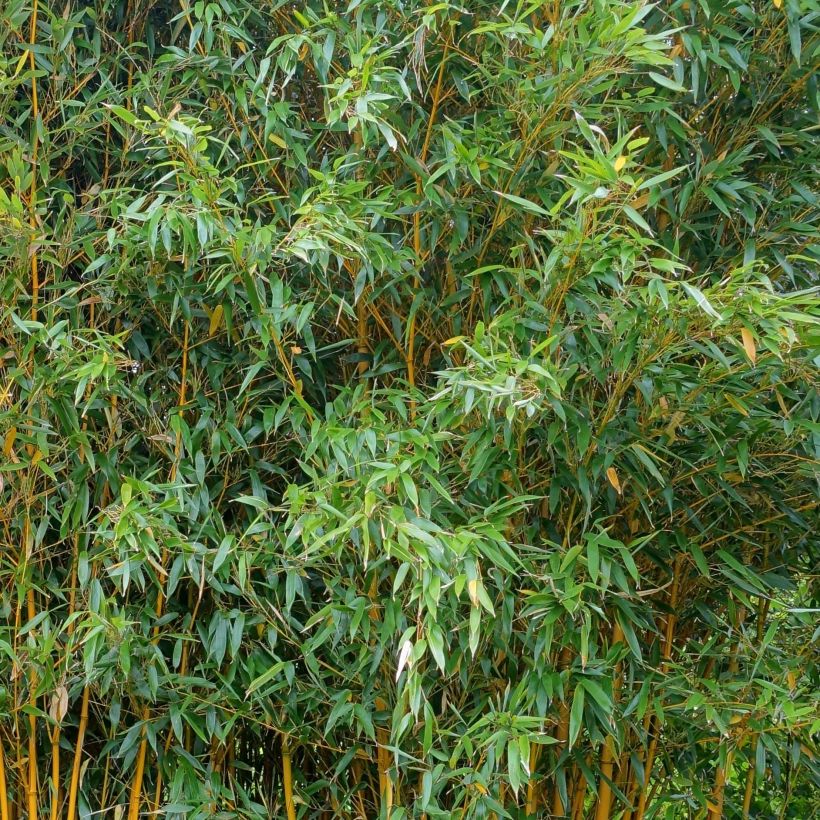

Plant habit
Foliage
Botanical data
Phyllostachys
vivax
Aureocaulis
Poaceae
Golden Chinese Timber Bamboo
China
Other Phyllostachys
Planting and care
Cultivated in containers, bamboo can be planted at any time of the year, except during freezing temperatures. However, the best planting period is late summer and autumn, when the soil is warm and rainfall is more frequent. The planting distance depends on how you plan to use your bamboo: for a mass planting, allow a spacing of 3 to 4 metres (10 to 13 feet) between each plant. For a hedge, this distance is reduced to 1.6 to 2 metres (5 to 7 feet).
In general, bamboo prefers rich, deep, well-drained soil that remains moist, either acidic or neutral. They can tolerate slightly alkaline soil, depending on the variety. Phyllostachys vivax 'Aureocaulis' enjoys sunlight but can tolerate partial shade.
During planting, make sure to loosen the soil and moisten the root ball by soaking it. You can add well-decomposed compost and lightly rake it into the surface. Watering should be done regularly for at least the first year if planted in the ground, and constantly if cultivated in pots. The establishment period may sometimes seem a bit long, but don't panic!
For bamboo with spreading rhizomes, the installation of a rhizome barrier (thick and durable polypropylene film) is essential as these varieties disregard property boundaries and can quickly colonize large areas. The rhizome barrier should be buried vertically, leaving a height of 10cm (4in) above ground and inclined at a 15° angle towards the plant.
In terms of maintenance, bamboo is not demanding: remember to weed around the base, at least in the beginning, until the fallen leaves on the ground form a natural mulch. Adding nitrogen-rich fertilizer (well-decomposed manure or liquid fertilizer) in spring and autumn can be beneficial.
Planting period
Intended location
Care
-
, onOrder confirmed
Reply from on Promesse de fleurs
Evergreen shrubs
Haven't found what you were looking for?
Hardiness is the lowest winter temperature a plant can endure without suffering serious damage or even dying. However, hardiness is affected by location (a sheltered area, such as a patio), protection (winter cover) and soil type (hardiness is improved by well-drained soil).

Photo Sharing Terms & Conditions
In order to encourage gardeners to interact and share their experiences, Promesse de fleurs offers various media enabling content to be uploaded onto its Site - in particular via the ‘Photo sharing’ module.
The User agrees to refrain from:
- Posting any content that is illegal, prejudicial, insulting, racist, inciteful to hatred, revisionist, contrary to public decency, that infringes on privacy or on the privacy rights of third parties, in particular the publicity rights of persons and goods, intellectual property rights, or the right to privacy.
- Submitting content on behalf of a third party;
- Impersonate the identity of a third party and/or publish any personal information about a third party;
In general, the User undertakes to refrain from any unethical behaviour.
All Content (in particular text, comments, files, images, photos, videos, creative works, etc.), which may be subject to property or intellectual property rights, image or other private rights, shall remain the property of the User, subject to the limited rights granted by the terms of the licence granted by Promesse de fleurs as stated below. Users are at liberty to publish or not to publish such Content on the Site, notably via the ‘Photo Sharing’ facility, and accept that this Content shall be made public and freely accessible, notably on the Internet.
Users further acknowledge, undertake to have ,and guarantee that they hold all necessary rights and permissions to publish such material on the Site, in particular with regard to the legislation in force pertaining to any privacy, property, intellectual property, image, or contractual rights, or rights of any other nature. By publishing such Content on the Site, Users acknowledge accepting full liability as publishers of the Content within the meaning of the law, and grant Promesse de fleurs, free of charge, an inclusive, worldwide licence for the said Content for the entire duration of its publication, including all reproduction, representation, up/downloading, displaying, performing, transmission, and storage rights.
Users also grant permission for their name to be linked to the Content and accept that this link may not always be made available.
By engaging in posting material, Users consent to their Content becoming automatically accessible on the Internet, in particular on other sites and/or blogs and/or web pages of the Promesse de fleurs site, including in particular social pages and the Promesse de fleurs catalogue.
Users may secure the removal of entrusted content free of charge by issuing a simple request via our contact form.
The flowering period indicated on our website applies to countries and regions located in USDA zone 8 (France, the United Kingdom, Ireland, the Netherlands, etc.)
It will vary according to where you live:
- In zones 9 to 10 (Italy, Spain, Greece, etc.), flowering will occur about 2 to 4 weeks earlier.
- In zones 6 to 7 (Germany, Poland, Slovenia, and lower mountainous regions), flowering will be delayed by 2 to 3 weeks.
- In zone 5 (Central Europe, Scandinavia), blooming will be delayed by 3 to 5 weeks.
In temperate climates, pruning of spring-flowering shrubs (forsythia, spireas, etc.) should be done just after flowering.
Pruning of summer-flowering shrubs (Indian Lilac, Perovskia, etc.) can be done in winter or spring.
In cold regions as well as with frost-sensitive plants, avoid pruning too early when severe frosts may still occur.
The planting period indicated on our website applies to countries and regions located in USDA zone 8 (France, United Kingdom, Ireland, Netherlands).
It will vary according to where you live:
- In Mediterranean zones (Marseille, Madrid, Milan, etc.), autumn and winter are the best planting periods.
- In continental zones (Strasbourg, Munich, Vienna, etc.), delay planting by 2 to 3 weeks in spring and bring it forward by 2 to 4 weeks in autumn.
- In mountainous regions (the Alps, Pyrenees, Carpathians, etc.), it is best to plant in late spring (May-June) or late summer (August-September).
The harvesting period indicated on our website applies to countries and regions in USDA zone 8 (France, England, Ireland, the Netherlands).
In colder areas (Scandinavia, Poland, Austria...) fruit and vegetable harvests are likely to be delayed by 3-4 weeks.
In warmer areas (Italy, Spain, Greece, etc.), harvesting will probably take place earlier, depending on weather conditions.
The sowing periods indicated on our website apply to countries and regions within USDA Zone 8 (France, UK, Ireland, Netherlands).
In colder areas (Scandinavia, Poland, Austria...), delay any outdoor sowing by 3-4 weeks, or sow under glass.
In warmer climes (Italy, Spain, Greece, etc.), bring outdoor sowing forward by a few weeks.





































